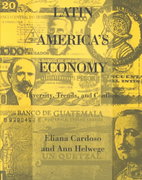4. (Full Ricardian Model: Advanced (30 points)) Return to the setup for Problem 1. You do not need to re-derive the PPFs for the U.S. and Canada. Just use the work you did there as needed. You will now solve a Ricardian model where I have made some small changes to the setup relative to what we did in lecture. This will not significantly change how you solve the model. The changes will be that the countries a) have different utility functions from each other, and b) while the utility functions are still Cobb Douglas, they will not have the .5 exponents on each good. In particular, the U.S. will have a slight preference for Steel and Canada will have a slight preference for Lumber. To be precise, here are the utility functions and marginal utilities: U.S.: U(S,L)=S L . This makes MU, =.6 6 go and MU, =.45% Canada: U(S,L)=SL. This makes MU, =4 ge and MU, =.6.5 You'll find that there will be something a little strange about the free trade outcome. I won't spoil the surprise. (Aren't you excited? Silly me, of course you're excited.) Be prepared. a. In autarky, what is the U.S. consumption/production of S and L? For Canada? b. What is the autarky utility level for the U.S.? For Canada? When trade begins, which country will specialize in/export Lumber? d. Exactly what will Canada produce when trade begins? How much will it export to the U.S.? e. Will the U.S. be satisfied by Canadian exports? If not, what does that mean for the production in the U.S.? What must the world price of Canada's export be? Now that we know what the price is of Canada's export, how much of the import does it consume? What is Canada's post trade utility? S. What is the final trade outcome for the U.S.? Has the U.S. benefited from trade? Why or why not? Has the U.S. suffered from trade? [There is a notion in International Economics about "small" countries. In this example Canada is "small" relative to the U.S. We see in this question that in this model the small country experiences significant gains from trade, but the large does not.]1. (Ricardian PPF: 20 points) Suppose the U.S. needs 20 units of labor to make a 100 tons of steel and 30 units of labor to produce 900 feet of lumber. In Canada, 20 units of labor are required to produce a 60 tons of steel and 25 units of labor to produce 1,000 feet of lumber. Assume the marginal productivityes of labor are constant in each country. Assume that U.S. has a population of 300 million and Canada has 35 million, all of whom provide one unit of labor. a. What is the marginal product of labor in the U.S. for steel? For lumber? b. What is the marginal product of labor in Canada for steel? For lumber? C. Which good, if any, does the U.S. have an absolute advantage in production? Canada? d. Which good, if any, does the U.S. have a comparative advantage in production? Canada? e. Graph the PPFs for U.S. and Canada. Plot Steel on the X-axis. f. What is the autarky price ratio in the U.S.? In Canada? g. If the U.S. and Canada began to trade, the free trade price ratio would lie in the interval [L,H]. What are L and H? NOTE: The information in this question will be used in another problem later in the assignment








